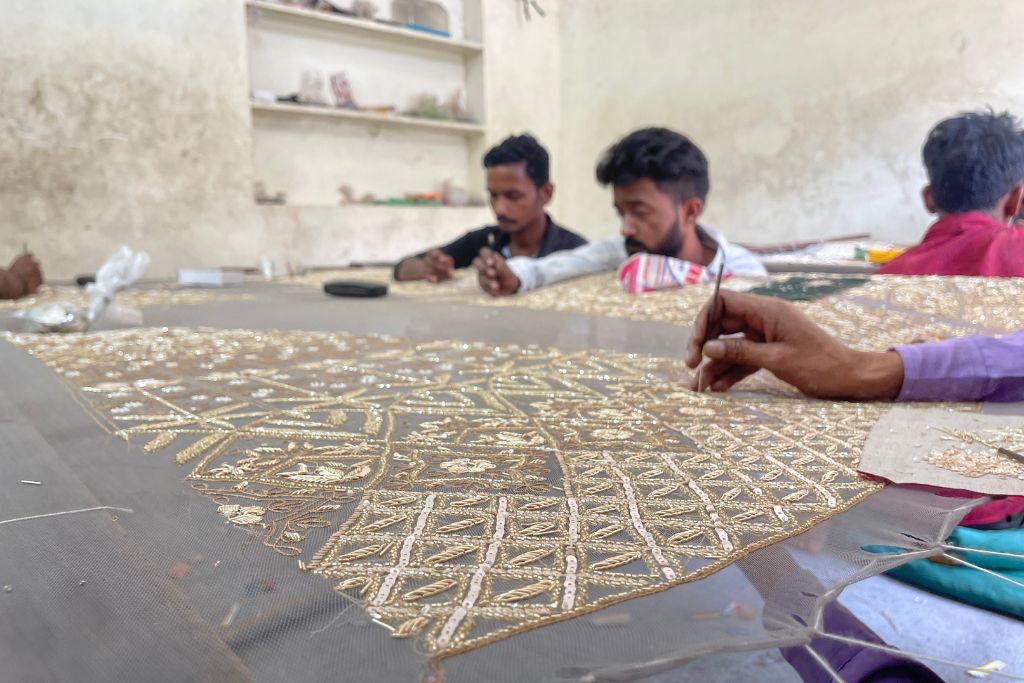
Zardozi: Is the golden embroidery of Bareilly losing its sheen?
Zari zardozi – the manual art of embroidering golden or silver threads on fabric and embellishing with sequins – a once-thriving art in Uttar Pradesh – appears to be moving past its golden days because of Chinese machine-made embroidery.
The art of zardozi traces its origin to Persia. The word ‘zardozi’ is a combination of two Persian words: zar meaning gold and dozi meaning embroidery. The elaborate designs are handcrafted.
In Bareilly, zardozi is the sole livelihood for about four lakh artisans. “But after Chinese embroidery machines came to India and after Goods and Services Tax (GST) was imposed, zardozi is not enough,” said Zehra Khatoon, one of the women artisans, implying that it’s hard to make a living with zardozi work alone.
The fabric is stretched over a frame so that it is held firmly in place – similar to the circular frame used in ordinary hand-stitched or machine embroidery – in the zardozi units.
Given the elaborate designs and painstaking embroidery, usually more than two artisans work on a piece. Sitting through the day to embroider puts an extreme strain on the legs of these artisans. “But the pain in the legs is better than the pain of hunger,” said Ashu Khan, one of the artisans.
Nawada village in Bareilly district is one of the zardozi hubs in Uttar Pradesh. “Our ancestors used to embroider gold on fabric. All we are left with is their legacy, the knowledge and tools, but not gold,” said artisan Ahmed Ansari.
As the sun’s rays fall on the off-white fabric, Mohammed Wahid embroiders a saree, embellishing it with sequins.
“A decade ago we used to get Rs 200–300 a day. Now we get Rs 500,” said Tariq Anwar, his hands and eyes intent on the work that was taking shape. “We make the patterns on clothes just like how a painter fills the canvas with colours,” he said.
Zardozi embroidery was mostly done by Muslim artisans once. Not anymore. Zehra Khatoon is happy and also sad that people of all castes and religions are taking up zari zardozi work. However, it’s poverty that draws them to this work. “In poverty lies a great opportunity for equality,” she said.
The lead image shows skilled artisans intricately crafting zardozi fabric.
Photos by Kumar Gaurav, a Village Square Fellow 2023-24, is a multilingual audio-visual journalist based in Bihar.







